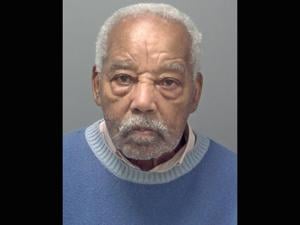In a landmark decision, 92-year-old Ryland Headley has been sentenced to life imprisonment for the rape and murder of Louisa Dunne, a crime committed nearly six decades ago. The Bristol Crown Court handed down the sentence, ensuring that Headley will spend the remainder of his life behind bars. The judge, in a stark statement, informed Headley, “You will never be released, you will die in prison.”
The conviction comes after a cold case review led to a breakthrough in forensic technology, linking Headley to the crime through DNA evidence. The review revealed a ‘billion to one’ DNA match from evidence preserved from the scene, including semen on the victim’s clothing and a palm print on a window.
A Crime Long Unsolved
On the night of June 27, 1967, Louisa Dunne, a 75-year-old widow, was brutally attacked in her Bristol home. Headley broke into her residence, violently raped her, and left her for dead, resulting in her death due to a major hemorrhage. Despite extensive efforts at the time, including matching thousands of potential suspects to a palm print, the case went cold.
The recent forensic advancements allowed scientists to analyze the DNA from the preserved evidence, leading to Headley’s arrest at his home in Ipswich, Suffolk, last year. During the trial, forensic scientist Andrew Parry testified that the DNA match was “a billion times more likely to be Mr. Headley’s DNA than anybody else’s.”
The Impact on Louisa Dunne’s Family
Louisa Dunne’s family has been deeply affected by the crime and the long wait for justice. In a poignant victim impact statement, her granddaughter, Mary Dainton, expressed the emotional toll the crime has taken on the family. “The death of my grandmother had a heart-wrenching effect on the family,” she said. “I’m now almost the same age she was when she was killed. It saddens me deeply that all those who knew and loved Louisa are not here to see that justice has been done.”
Mary Dainton also highlighted the lasting impact on her mother, who never recovered from the trauma, and the lack of support available at the time. “There were no counsellors for working-class people then; my mother came from an age where they dealt with things differently,” she noted.
Historical Context and Legal Implications
Headley’s conviction sheds light on the challenges and advancements in forensic science over the years. In 1967, DNA analysis was not available, and the case remained unsolved for decades. The breakthrough in DNA technology allowed for a re-examination of the evidence, leading to Headley’s conviction.
During the sentencing, prosecutors noted that had Headley been caught at the time of the crime, he might have faced the death penalty, which was abolished in the UK in 1965, but could still have been applied under certain circumstances until 1969.
A History of Violence
Headley’s criminal history extends beyond the murder of Louisa Dunne. The court heard that in 1977, he committed two additional rapes and multiple burglaries. He pleaded guilty to these charges, which involved breaking into the homes of elderly women, further highlighting his pattern of targeting vulnerable individuals.
The prosecution detailed how Headley evaded capture for decades, living in Bristol during the time of Dunne’s murder but moving to Suffolk shortly thereafter. Voter records confirmed his residence in Bristol, close to Dunne’s home, during the late 1960s.
The diligent work of the police and advancements in forensic science ultimately led to his arrest and conviction, ensuring justice for Louisa Dunne and closure for her family.
As Headley begins his life sentence, the case serves as a testament to the perseverance of law enforcement and the power of modern forensic science in solving cold cases, bringing long-awaited justice to victims and their families.
